
How to Use 18650 3s2p: Examples, Pinouts, and Specs
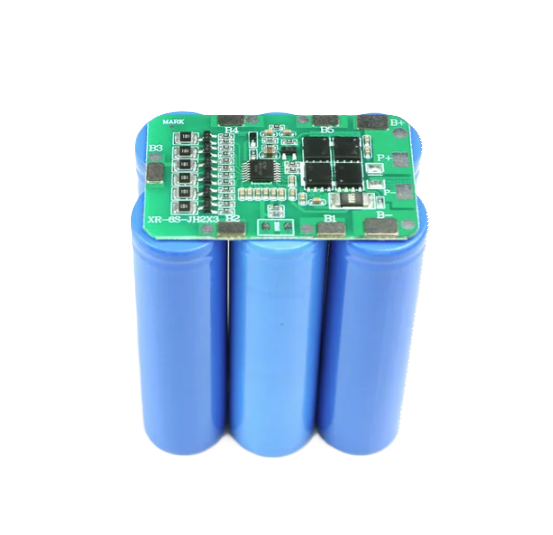
 Design with 18650 3s2p in Cirkit Designer
Design with 18650 3s2p in Cirkit DesignerIntroduction
The 18650 3S2P battery pack is a versatile and powerful energy source commonly used in various electronic applications. This configuration consists of six 18650 lithium-ion cells arranged in a combination of series and parallel connections. Three cells are connected in series (3S) to increase the voltage, and two sets of these series-connected cells are connected in parallel (2P) to double the capacity. This setup provides a balance of voltage and capacity, making it suitable for applications requiring extended run times and higher power demands, such as portable power banks, electric bicycles, and small-scale energy storage systems.
Explore Projects Built with 18650 3s2p
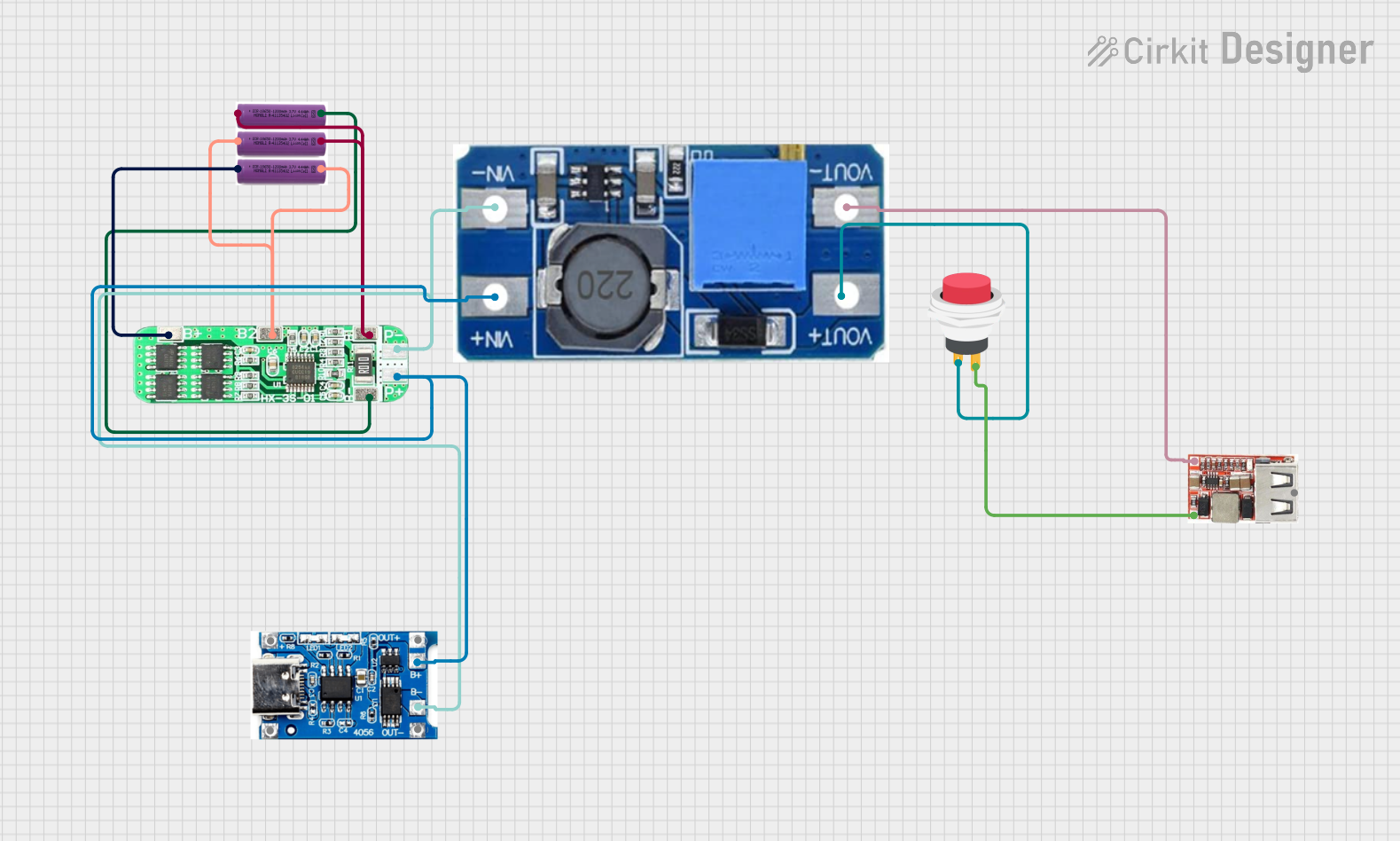
 Open Project in Cirkit Designer
Open Project in Cirkit Designer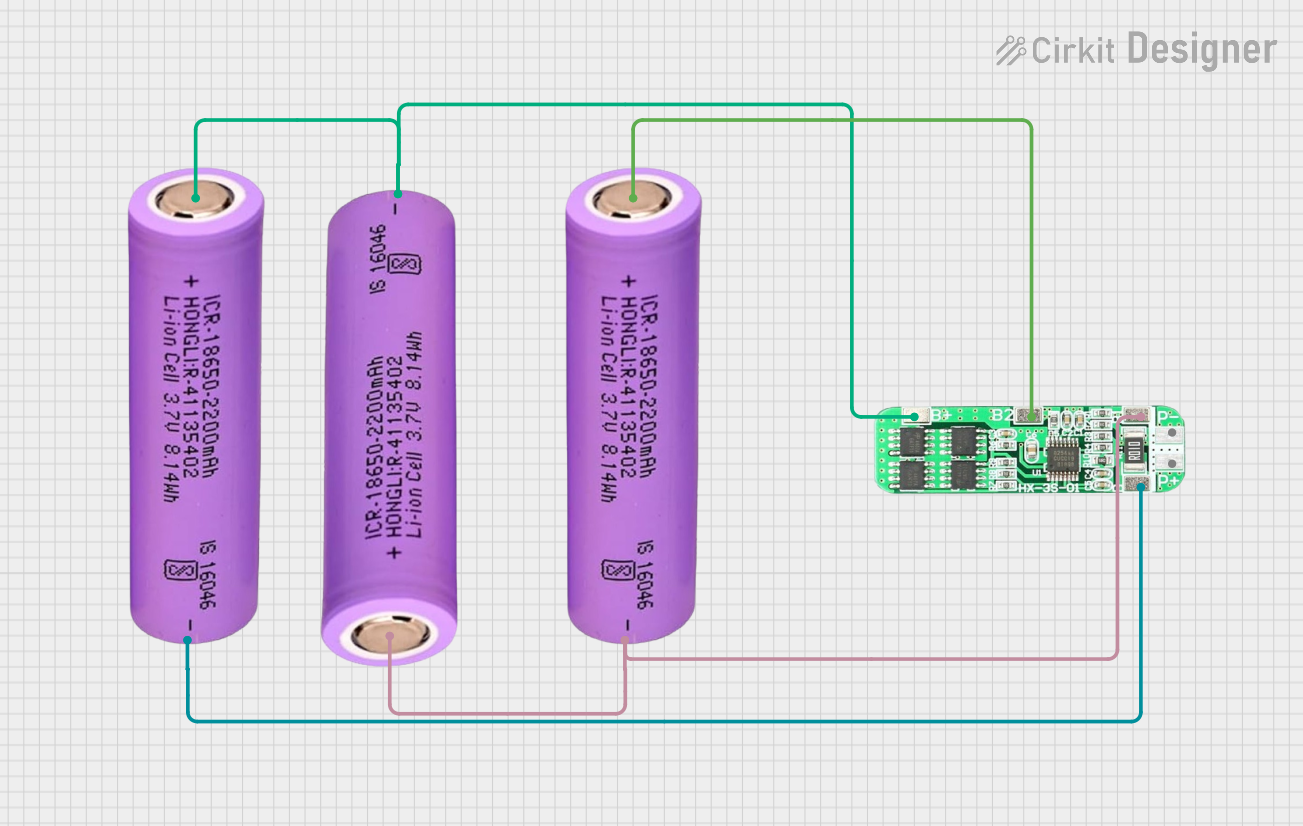
 Open Project in Cirkit Designer
Open Project in Cirkit Designer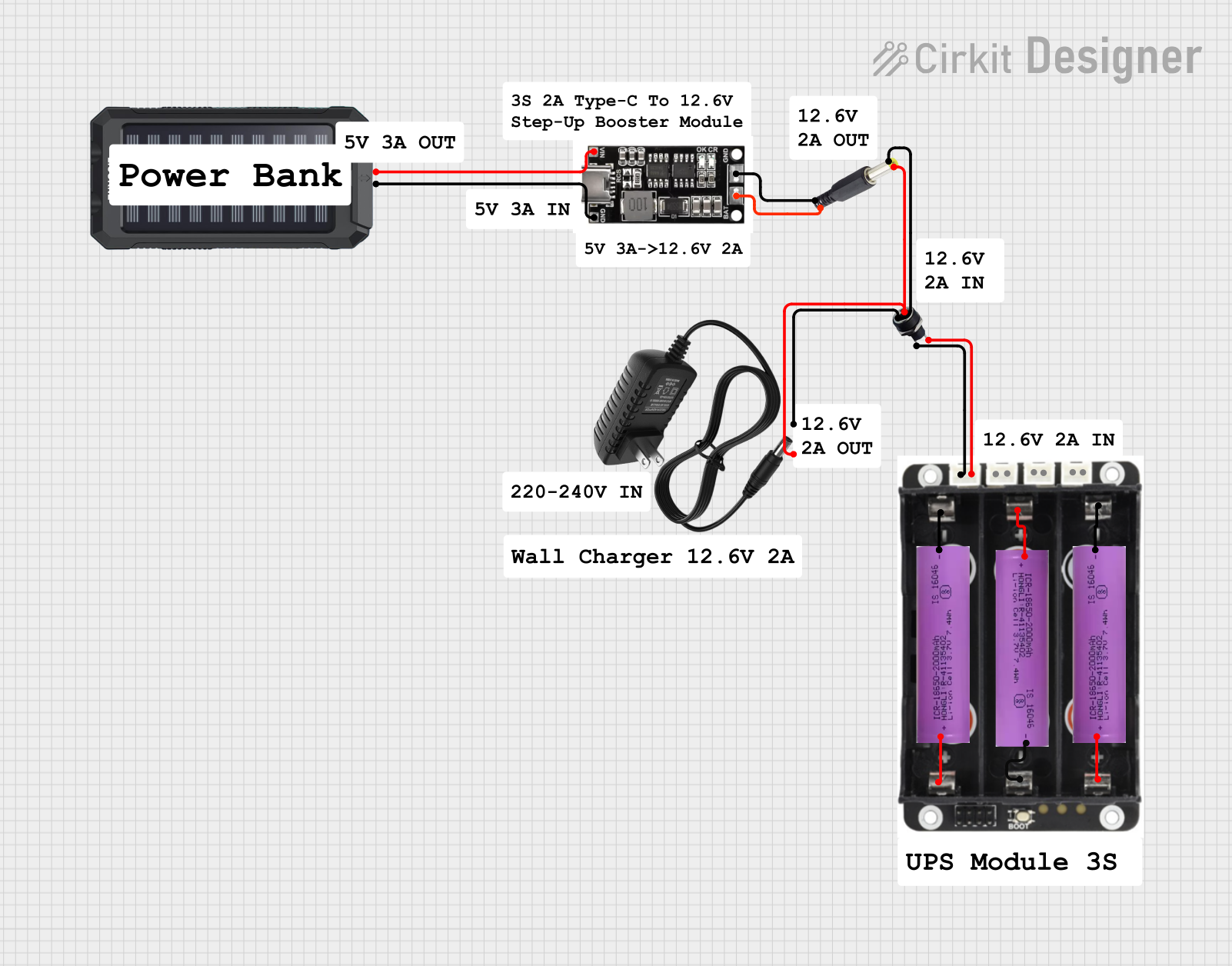
 Open Project in Cirkit Designer
Open Project in Cirkit Designer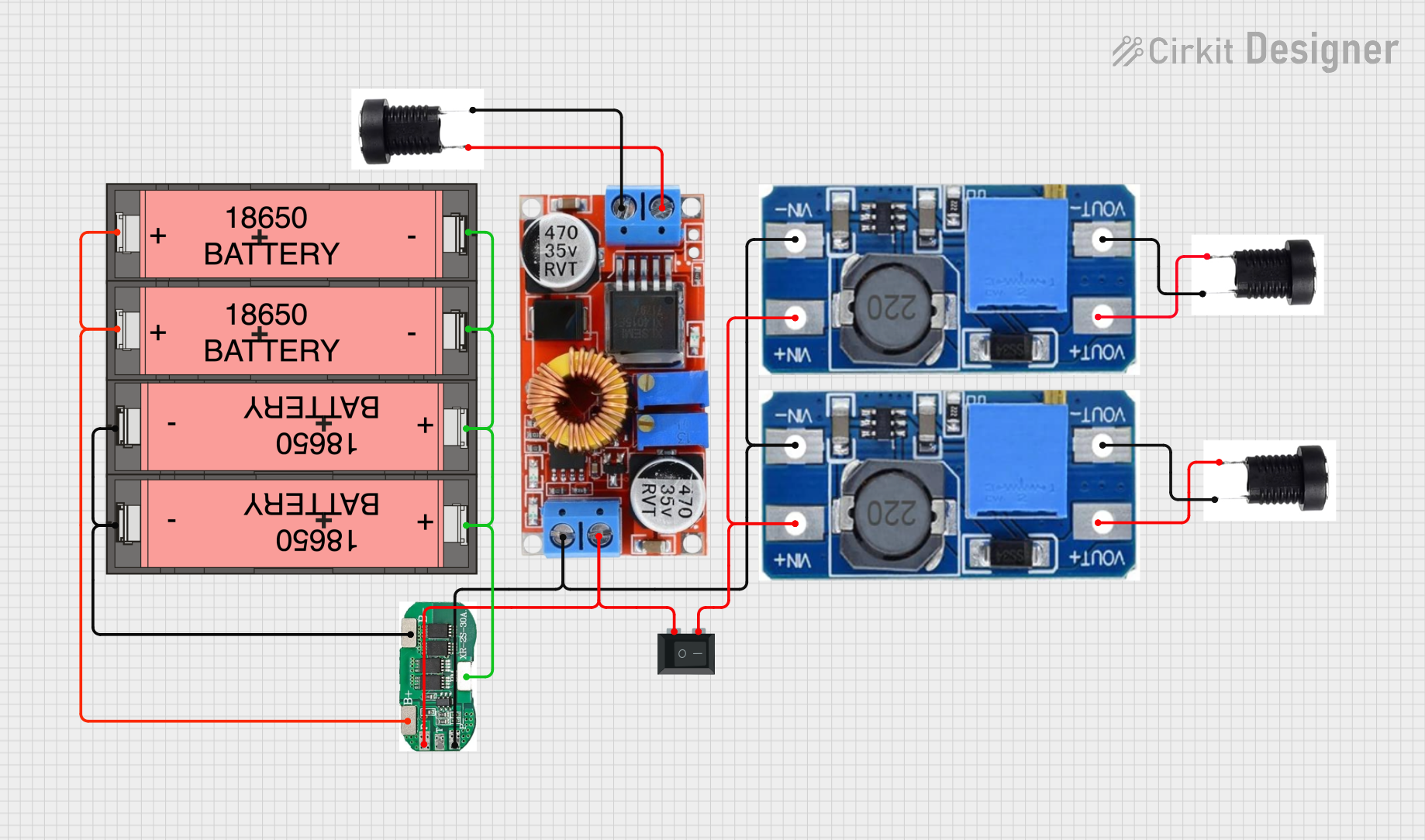
 Open Project in Cirkit Designer
Open Project in Cirkit DesignerExplore Projects Built with 18650 3s2p

 Open Project in Cirkit Designer
Open Project in Cirkit Designer
 Open Project in Cirkit Designer
Open Project in Cirkit Designer
 Open Project in Cirkit Designer
Open Project in Cirkit Designer
 Open Project in Cirkit Designer
Open Project in Cirkit DesignerCommon Applications and Use Cases
- Portable power banks
- Electric bicycles and scooters
- Remote control (RC) vehicles
- Uninterruptible Power Supplies (UPS)
- Small-scale solar power storage
- DIY electronics projects
Technical Specifications
Key Technical Details
- Nominal Voltage: 11.1V (3.7V per cell in series)
- Capacity: Depends on the capacity of individual cells (sum of two cells in parallel)
- Maximum Charge Voltage: 12.6V (4.2V per cell)
- Discharge Cut-off Voltage: 9V (3.0V per cell)
- Maximum Continuous Discharge Current: Depends on the cell specification
- Charge Temperature Range: 0°C to 45°C
- Discharge Temperature Range: -20°C to 60°C
Pin Configuration and Descriptions
| Pin | Description |
|---|---|
| + | Positive terminal of the battery pack |
| - | Negative terminal of the battery pack |
| B1 | Connection point between the first and second cell in series |
| B2 | Connection point between the second and third cell in series |
Usage Instructions
How to Use the Component in a Circuit
Battery Integration: Connect the positive terminal of the battery pack to the positive rail of your circuit and the negative terminal to the ground rail.
Voltage Monitoring: It is crucial to monitor the voltage across each cell using a Battery Management System (BMS) to prevent overcharging or deep discharging.
Charging: Use a dedicated lithium-ion battery charger that matches the pack's specifications. Ensure the charger's output does not exceed the maximum charge voltage.
Load Connection: Connect your load to the battery pack, ensuring it does not draw more current than the maximum continuous discharge current rating.
Important Considerations and Best Practices
- Always use a BMS for charging and discharging to protect the cells from over-voltage, under-voltage, and over-current conditions.
- Avoid exposing the battery pack to extreme temperatures, as it can damage the cells and reduce their lifespan.
- Do not puncture, crush, or disassemble the battery pack.
- Store the battery pack in a cool, dry place when not in use.
- Regularly check the battery pack for any signs of damage or wear.
Troubleshooting and FAQs
Common Issues Users Might Face
- Battery not charging: Ensure the charger is functioning correctly and the connections are secure. Check the BMS for any faults.
- Reduced capacity or runtime: This could indicate that one or more cells are deteriorating. Test each cell individually to determine if they need replacement.
- Battery pack overheating: Overheating can occur due to overcharging or drawing too much current. Ensure the load is within the battery pack's specifications.
Solutions and Tips for Troubleshooting
- If the battery pack is not charging, verify the charger's output voltage and the integrity of all connections.
- For reduced capacity, replace any faulty cells and ensure the BMS is correctly balancing the cells.
- In case of overheating, disconnect the load immediately and allow the battery pack to cool down. Check for any short circuits or overloads in your circuit.
FAQs
Q: Can I charge the 18650 3S2P battery pack with a standard lithium-ion charger? A: Yes, as long as the charger's output matches the battery pack's charging specifications.
Q: How do I know when the battery pack is fully charged? A: A BMS will typically indicate when the cells have reached their maximum charge voltage. Alternatively, use a multimeter to measure the voltage across the terminals.
Q: Is it safe to leave the battery pack charging overnight? A: It is generally safe if you are using a charger with overcharge protection and a BMS. However, it is best practice to monitor the charging process.
Q: Can I replace individual cells within the pack? A: Yes, but it is recommended to replace cells with the same brand and capacity to ensure balanced charging and discharging.
Q: What should I do if a cell in the battery pack becomes swollen? A: Swollen cells are a safety hazard and should be replaced immediately. Dispose of the swollen cell following local regulations for lithium-ion batteries.